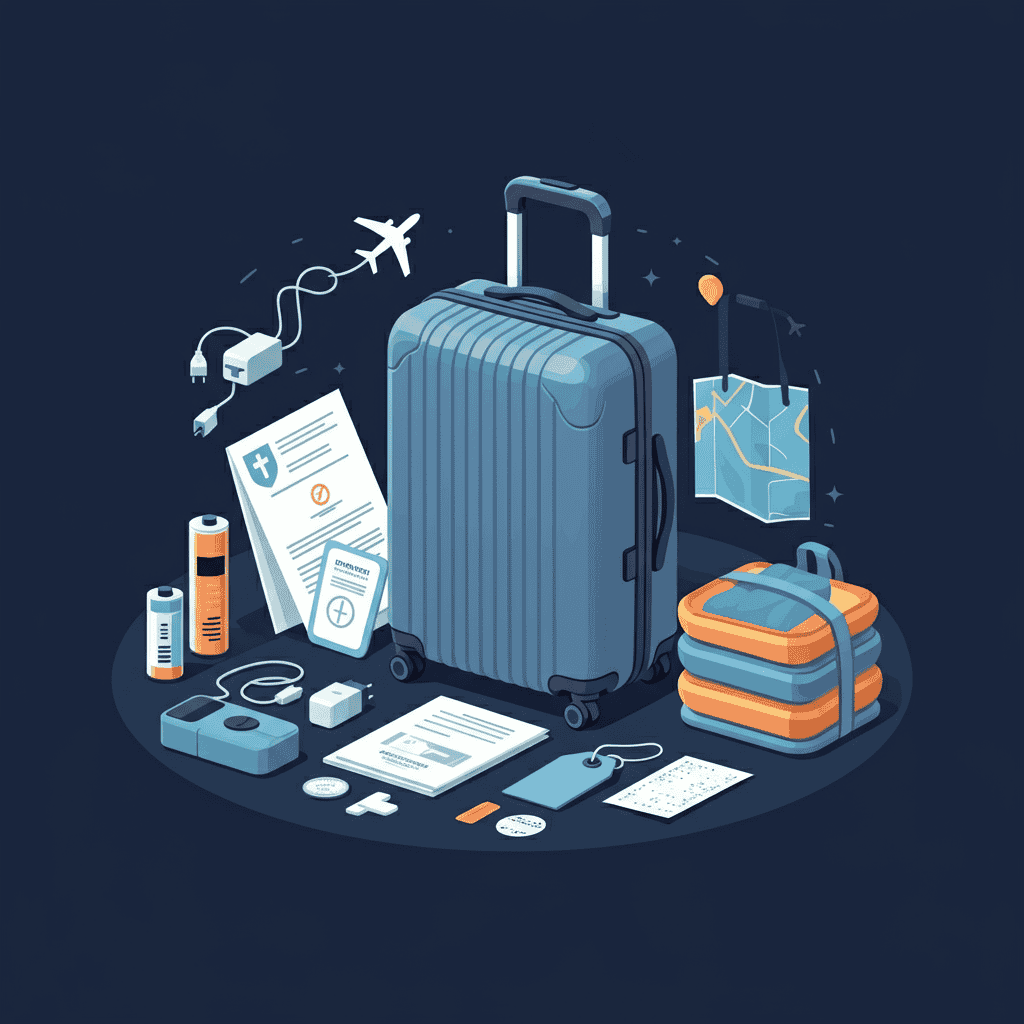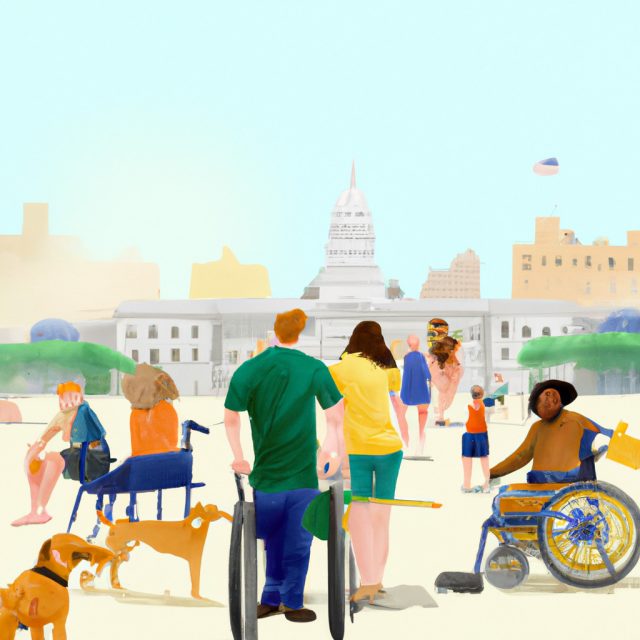Travel should be for everyone, regardless of mobility, sensory, or cognitive abilities. With thoughtful planning and the right resources, people with disabilities can explore the world confidently and comfortably. This guide covers everything from research and accommodations to packing and on-the-road tips, ensuring your next vacation is truly inclusive.
1. Begin with Thorough Research
Before booking any flight, hotel, or tour, dedicate time to researching destination accessibility. Websites such as AccessibleGO, ADA.gov, and local tourism boards often provide detailed information on venue access, transportation options, and service availability. Join online communities and forums—like Disabled Travelers on Facebook or the r/DisabledTravel subreddit—to read firsthand experiences and ask specific questions.
2. Choose the Right Accommodations
Not all hotels are created equal when it comes to accessibility. Look for ADA-compliant rooms (or equivalent local standards) offering features such as:
- Wider doorways and roll-in showers
- Grab bars near toilets and tubs
- Lowered sinks and accessible light switches
- Visual alarms for guests with hearing impairments
- Service animal–friendly policies
Contact the property directly to confirm details. Photos and third-party listings can be misleading. Ask for measurements of bathrooms, bed heights, and corridor widths to ensure a comfortable stay.
3. Plan Accessible Transportation
Getting around smoothly is key to an enjoyable trip. When booking flights, airlines often require advance notice (up to 48 hours) for wheelchair assistance or oxygen support. Arrive at the airport early to allow extra time through security and boarding.
For ground transport, research wheelchair-accessible taxis, rideshares, trains, or buses. Apps like Wham!, Hailed, and Access A Ride specialize in accessible vehicle bookings. In many cities, public transit operators provide paratransit services—door-to-door rides for travelers with mobility challenges.
4. Leverage Assistive Devices and Technology
Modern technology can transform your travel experience. Consider packing or renting:
- Portable ramps for curbs and steps
- Travel scooters or lightweight folding wheelchairs
- Hearing aid-compatible headsets for guided tours
- Screen-reader apps and diagramming tools for visually impaired travelers
- GPS tracker devices for crowd management
If you rely on medical equipment—CPAP machines, oxygen concentrators, or insulin pumps—consult your healthcare provider about airline policies and voltage requirements in your destination country.
5. Select Accessible Attractions
From museums to natural parks, many attractions now prioritize inclusion. Check if landmarks offer:
- Elevators, ramps, and accessible restrooms
- Sensory-friendly hours for visitors with autism
- Audio description tours and sign-language interpreters
- Reduced-capacity or skip-the-line access
For outdoor adventures—such as national parks—research wheelchair-accessible trails and adaptive equipment rentals. Organizations like the National Park Service (USA) and Euan’s Guide (UK) provide detailed accessibility maps and reader reviews.
6. Dining Out with Confidence
Eating out is a highlight of any trip, but can present challenges if restaurants lack accessible layouts. Use apps like WheelchairTravel.org or All Out Adventures to find eateries with wide entrances, accessible restrooms, and tables that accommodate wheelchairs. Call ahead to confirm seating arrangements and inform them of any dietary restrictions or service-animal needs.
7. Smart Packing Tips

A strategic packing plan reduces stress on the road. Pack:
- Extra batteries and chargers for medical devices
- Copies of prescriptions and a doctor’s letter detailing medical equipment needs
- Lightweight collapsible mobility aids
- High-contrast luggage tags & braille stickers for the visually impaired
- A compact first-aid kit with any specialty supplies
Distribute essential items between carry-on and checked bags in case of delays or loss. Use color-coded packing cubes or labels to quickly locate adaptive gear.
8. Budgeting for Accessibility
Accessible travel may incur extra costs, but intelligent planning can keep expenses under control. Look for advance-booking discounts on accessible hotel rooms and transport services. Some countries offer reduced or waived admission fees for travelers with disabilities. You may also qualify for tax credits or subsidies—check local tourism board incentives.
9. Health, Safety, and Insurance
While exploring new destinations, prioritize your health and safety. Secure travel insurance that explicitly covers pre-existing conditions and medical equipment. Companies like Allianz and World Nomads have specialized plans for travelers with disabilities.
Research local healthcare facilities and emergency numbers. If you have complex medical needs, identify hospitals or clinics near your accommodations and save their contact details in your phone.
10. Cultural Etiquette and Advocacy
Attitudes toward disability vary worldwide. In some cultures, people may be curious or unfamiliar with mobility aids. Respond politely, educate when possible, and advocate for respect. Learning a few phrases—such as “I need assistance” or “Thank you for understanding”—in the local language can build empathy.
11. Solo Accessible Travel: Tips for Independence
Traveling alone with a disability can be empowering. Use online platforms like Meetup, Couchsurfing, or AccessibleTravelChat to connect with local communities or find travel buddies. Keep an itinerary shared with a trusted friend or family member. Leverage location-sharing apps for added security
12. Sample 7-Day Accessible Itinerary
To illustrate how an accessible trip might unfold, here’s a sample 7-day plan for a city break in Barcelona, Spain:
- Day 1: Arrive, settle into ADA-compliant hotel near Plaça de Catalunya
- Day 2: Guided wheelchair-accessible tour of Sagrada Família and Park Güell
- Day 3: Visit Museu Picasso (audio description tour) and La Boqueria market
- Day 4: Day trip to Montserrat with accessible rack railway
- Day 5: Barcelona Aquarium (sensory-friendly morning) and beach with accessible walkways
- Day 6: Tapas crawl in El Born neighborhood—confirm accessible seating ahead
- Day 7: Relax, shop for souvenirs, and depart with confidence
13. Real Traveler Stories
Hearing from others who’ve navigated similar challenges can be inspiring. Consider reading blogs like Rolling Rains or Wheelchair Travels for personal accounts and practical hacks. Share your own journey on social media or dedicated platforms to help future travelers.
14. Conclusion: Embrace Adventure Without Limits
Accessible travel is about empowerment, discovery, and inclusion. By researching thoroughly, selecting the right services, and packing smart, you can transform any destination into your playground. The world awaits—wheelchair ramps, sign-language interpreters, and sensory-friendly tours included.
Accessible travel also encourages us to think beyond the footprint—not just in terms of where we go, but how we engage with the world. It’s about creating experiences that are respectful, inclusive, and lasting—for both the traveler and the communities they visit.
Ready to embark on your next accessible adventure? Start planning today and unlock a world of inclusive possibilities.
Learn more about: Wellness Travel: A Complete Guide to Revitalize Mind, Body, and Soul














